United States News
See other United States News Articles
Title: Forensic acoustic proof of SECOND shooter in the Las Vegas massacre
Source:
[None]
URL Source: https://www.youtube.com/watch?v=JxmEFeKy8aI
Published: Oct 11, 2017
Author: Mike Adams TheHealthRanger
Post Date: 2017-10-11 00:40:47 by A K A Stone
Keywords: None
Views: 51939
Comments: 148
Post Comment Private Reply Ignore Thread
Top • Page Up • Full Thread • Page Down • Bottom/Latest
Comments (1-81) not displayed.
.
.
.
#82. To: nolu chan (#81)
(Edited)
LOL. He scribbled on a whiteboard. The amplitude graphs of the audio referenced on my meme can be reproduced by anyone with minimal tools. It's REPRODUCIBLE - that's what differentiates valid science from conspiratorial buffoonery. Show us the actual amplitude graphs or STFU.
That you reproduce meaningless bullshit is meaningful, but not as you intend.
Your chartoon lists "Test for Echo" and gives links to the Taxi Driver video. Echo has nothing to do with measurements at the target site. The methodology you link, and cite, is for measurements at the target site, only. It uses the sound of bullet strikes on the venue surface, and the sound wave of the muzzle blast reaching the same recording device, not any echo. They are recorded on the same nearby microphone at line of sight, not at two different locations, not line of sight, and over 300 feet apart. You are absolutely clueless. Here are your exact words about your chartoon being about two different sounds from the Taxi Driver Video: I used the same speed I used in my other analysis (appended below) - based upon an air temperature of 72 degrees Then I calculated the difference in time between the last bullet sound (T1) and the corresponding last report sound (T2). [graphic omitted] T2-T1 = time the report traveled = 1.07 1.07 * FPS of 1130.8 = 1208.8 [graphic omitted] An analysis of two sequential burts of gunfire between: =============== Here you are citing times sounds are heard in the taxi, at least 340 feet from the shooter and around the corner, and the time en echo returned from who knows where, by an unknown path, back to the taxi, still at least 340 feet from the shooter. Nothing can be accurately calculated with this data. T2 - T1 is not the time some report traveled. It is time difference between the time of the bullet arrival report and the sound arrival report. If your dippy calculation were correct, and the bullet were subsonic, T1 would be larger than T2, the the time some mythical report traveled would be a negative number. T2 - T1 is larger or smaller depending on the difference between the speed of the bullet and the speed of sound. If the difference of the flight time of the bullet and sound at 1200 feet were .2 seconds, you would calculate (T2 - T1) the muzzle report traveled 400 yards in .2 seconds. The speed of sound would still take 1.06 seconds to travel 1200 feet. Regardless of what T2 - T1 indicates, the muzzle report will travel 1200 feet in 1.06 seconds. The difference between the two report times indicates the difference in the velocity of time and the velocity of the bullet. If the sound took 1.06 seconds, the distance was 1200 feet. With the known distance, the velocity of the bullet can be calculated. NOTE: "1.07 * FPS of 1130.8 = 1208.8" is incorrect. 1.07 * 1130.8 = 1209.956. NOTE: In the next mention FPS is 1130 ft per second at 72 degrees. NOTE: If you are measuring time between two different gunshots, rather than a shot and its own echo, you cannot derive distance. You would be measuring the time between two shots, saying nothing of distance about either one. The sounds are all from the Taxi Lady recording. These sounds do not give the aiming point, or point of origin of the shots. These sounds give the time sounds were recorded at the taxi. A sound that traveled 1.07 seconds at the speed of sound went 1,209.1 feet. (1,130 * 1.07). You cannot measure the Echo Distance from the aiming point back to the point of origin as there is no recording at the point of origin, the point of origin being the 32nd floor (supposedly). Both links go to the taxi video. The Echo Distance is from the point the sound reflected back, to the taxi location where it was recorded, following the path of the sound at ground level back to the taxi. What is recorded on the Taxi Lady video is the sound that traveled from the 32nd floor to the taxi, and whatever may have come from elsewhere as a sound reflected back. For a sound and its echo to show up on the taxi video at a 1.07 second interval, it had to travel to a reflective surface and back in 1.07 seconds, going a total distance of 1,209.1 feet. The event venue was about 400 yards away. For any recorded echo, the sound of the shot had to travel to the taxi, and the sound also had to travel from the 32nd floor to a reflecting surface and come back to the taxi. If the echo came from the venue area, 400 yards away, the echoed sound had to travel 400 yards to a reflective surface, then turn around and travel at least 400 yards, if the path were unobstructed at ground level, to the taxi location. If 1,209.1 feet were one way, the round trip out and back to the 32nd floor would be about 2,418.2 feet. The path back to the taxi, if unobstructed would be somewhat shorter, as 1,209.1 would be the hypotenuse of a triangle, with the distance back to the taxi being the long side of the right triangle, if unobstructed. Any obstructions at ground level would cause the sound to take an indirect path back to the taxi. You can make pretty graphics, and wonderful word salads, and throw around terms like relativity, but you cannot do simple calculation. Your analysis is pretty, but it is complete bullshit. No echo traveled to the venue and returned in 1.07 seconds. For a sound recorded in the taxi, there can be no corresponding echo of that sound recorded 1.07 seconds later in the taxi, if the echo came from the venue area. https://www.nytimes.com/interactive/2017/10/02/us/mandalay-bay-vegas-shooting.html New York Times Here is where 400 yards or 1200 feet come from. It is an estimated distance between Mandalay Bay and the Harvest Festival stage, at ground level, based on a Google image. As for your bullshit figure of 1209 feet distance for the bullet, it has a major problem. The approximate 400 yards you are using as known distance was measured at ground level from a google image. In the scenario where the gunman is at the 32nd floor, and floors average 10.9 feet, the gunman is about 338 feet in the air. You would have 338 feet be the short side of a right triangle, where the hypotenuse is 1209 feet. The long side of the right triangle, representing distance at ground level would be 1,160.79 feet. a2 + b2 = c2 3382 + x2 = 12092 114244 + x2 = 1461681 x2 = 1461681 - 114244 x2 = 1347437 x = 1160.79 feet. 50 feet here, 50 feet there, pretty soon it affects your calculations.
That's right. What part of TWO. SEPARATE. ANALYSIS. are you failing to comprehend?
The amplitude graphs are reproducible by anyone who has simple tools and access to the video on Youtube. Where's yours?
What part of TWO idiotic analyses don't you understand?
Proving imbeciles can reproduce. As the U.S. Supreme Court observed, "Three generations of imbeciles are enough." Your chartoons, with your hilarious analysis, are entertaining, sort of like the scientific sounding youtubers preaching flat Earth theory.
The amplitude graphs are reproducible by anyone who has simple tools and access to the video on Youtube. Where's yours? { shrug } Maybe you just don't have what it takes.
On your spreadsheet chartoon, notice that you calculate T = Tb - Ts. You calculate elapsed time as the time it took the bullet to travel, minus the time it took the sound to travel. As the bullet is supersonic, and sound is a constant, the sound would travel 400 yards in 1.06s and the bullet would travel the 400 yards in less than 1.06s. Subtracting 1.06 from a smaller number will always yield a negative number. At 1200 feet, you actually calculate Tb as 0.448578s, and Ts as 1.062s and calculate the T as -0.6126, negative 0.6126 seconds. The average donkey could recognize that something is wrong when the result is negative time. Just what do you think happens in negative 0.6126 seconds? You could at least recognize that if you get a negative number, you have stated the required formula backwards, and you proceeded to perform the calculation backwards, and present the bass ackwards result of your understanding of the study you looked at. You've got what it takes to make bullets travel in negative time. Your brain apparently has zero amplitude.
>>at 1200 feet, you actually calculate Tb as 0.448578s, and Ts as 1.062s and calculate the T as -0.6126, negative 0.6126 seconds. 0.448578 is the ballistic projectile time. 1.062 is the time to travel the same distance at the speed of sound The MEASURED, absolute value, of the Ellapsed Time difference, per the audio amplitude graph... ...between the Last Bullet sound event and the Last Report sound event is 0.689655 Now, ask your donkey - what distance does that MEASURED absolute time difference correspond to on the chart?
No Absolute value is ever expressed as a negative number. Had your undisclosed formula for the last column of your spreadsheet included code to express an absolute value, your spreadsheet results would not appear as negative numbers. But your spreadsheet displays negative numbers and you did not even question it or fix your spreadsheet. The results should all be positive, like this: d = distance 400 yards, 1200 feet Column 1 = d/FPS = time in seconds Row 1 = directly inserted data. Data display is set to show 3 decimal places. Row 2 = spreadsheet formulas The formulas for Row 2 are dragged down to generate Rows 3-30.
>>No Absolute value is ever expressed as a negative number. =========== Since we KNOW from the observed audio Vb is supersonic, we can treat the difference between Tb and Ts as Absolute. Range corresponds to the ABSOLUTE value of the difference in time.
And BTW, You're not even reading from the relevant part of the paper - where the microphone adjacent to the victim scenario is discussed. http://ww w.btgresearch.org/AcousticReconstruction02042012.pdf That's the same formula I have in my illustration:
I know. They have a spreadsheet function for that. It has been around since Lotus 123 and Quatro. ABS(number).
Yes, but in this case the ABS is implied in knowledge of what the spreadsheet is actually calculating. If you applied ABS(Tb-Ts-) the chart would loose the information regarding whether the Vb was super-sonic or not, which the negative numbers conveniently tell us. The author's formula works just fine without your tweakage. http://ww w.btgresearch.org/AcousticReconstruction02042012.pdf And that IS the same formula I have in my illustration:
Why do you keep posting this chartoon when all your data is not only wrong, but farcical? The only things you proved is that you do not know how to calculate the average velocity of an imaginary bullet and you are hopeless at spreadsheets. Your entertainment value as a useful idiot is over for now, and you will never figure it out without more help. Help is on the way, grasshopper. Columns 1, 2, and 3 are direct entry of data generated by entering imaginary data into a generator at http://www.shooterscalculator.com/. I replicated the data taken from the calculator with “My BB's.” If I input initial velocity as 3240 fps, and other data, and call it “My BB's,” I can show a chart for magical bb’s. http://www.shooterscalculator.com/ballistic-trajectory-chart.php?t=34fa8220 The Shooter’s Calculator only provides a result based on user input. It does not present a spreadsheet with the formulas to generate the data. The data from the Calculator can be cut and pasted into a spreadsheet, or entered by direct entry; this produces data in the cells, but no spreadsheet formulas in the cells. The chart states the speed of sound as 1130 feet per second (fps). The remaining 4 columns, (4, 5, 6, 7) were generated by VxH. Column 6 uses 1130.8 fps to calculate the time for sound to travel the distance stated in Column 1. Column 4 is labeled as (Avg V) Vb. This column purports to present the average velocity of the bullet to cover the distance for the row it is in. All of the data in this column is epically wrong as the methodology of calculation is absurdly wrong. To calculate the average velocity of the bullet, divide distance by time. Instead of this, a personal misbegotten formula was used. Probably a pocket calculator for each cell in Column 4 was used to perform the calculations, and the data was directly entered into the cells by hand. For the first two data rows, sum 3240 and 3163 and divide by 2. 6403/2 yields the 3201 in Column 4. For the first three data rows, sum 3240+3163+3088 for 9491. 9491 / 3 yields the 3163.6667 in Column 4. And so on, and so forth. All the calculated Column 4 data (average Vb), is garbage. The chosen methodology was to sum the velocity given for each distance, and divide by the number of elements summed. This produces nonsensical data. Example: You drive a car 100 miles at 80 mph. You drive another 100 miles at 20 mph. With this bogus methodology, 80 + 20 = 100, divide by 2, and your average velocity was 50 mph. Not. In the real world, you drove 100/80 or 1.25 hours at 80 mph. You drove 100/20 or 5 hours at 20 mph. And you drove 200 miles in 6.25 hours. Your average speed was 200/6.25, or 32 mph. Column 4, in addition to using an absurd methodology for its calculations, also incorporates two summing errors for the velocities taken from Column 3, at 900 feet and 1275 ft. In each case, the actual sum was 1 less than that calculated. Spreadsheet formulas are not prone to fat finger syndrome, and do not make such errors, but someone with a pocket calculator or pen and paper does. The data was typed in after external calculation. Where you calculate 2367.5926 average Vb at 1950 feet, 1950/1.211933 (the velocity of the bullet in Column 5), it yields 1608.9998 fps, remarkably close to the 1609 in Column 3. But then, the elapsed time in Column 2 is 0.86, not 1.21933. It is a conundrum how the bullet traveled for 1.21933 seconds in an elapsed time of 0.86 seconds. Of course, when you use Column 1 1950 ft and Column 3 1609 fps to derive the time of flight, the formula is d/Vb, and Vb is the Average Velocity. The bullet will travel 1905 feet distance (Col 1) in 0.86 sec time (Col 2) in 1905/0.86 or 2267.4418 average Vb. Stated in your headnote is Tb is d/Vb. It is noteworthy that you used Column 3 as the "average" velocity of the bullet in order to derive the other average velocity of the bullet in Column 4. Column 5 (Tb) incorporates the garbage data from Column 4 into its calculations, and all the resulting calculated data is wrong. GIGO. Column 7 (T = Tb – Ts) incorporates the garbage data from Column 5 and all the calculated data is wrong. GIGO. The chart is multicolor and pretty, but the data for the imaginary bullet is demonstrably wrong in every column you created, except for column 6 where you succeeded in dividing the distance by 1130.8.
LOL please tell the class why the bullet accelerates / decelerates / accelerates repeatedly when your "analysis" is applied? The time in the chart rendered by the ballistic calculator only has 2 decimals of precision. Calculating the average per the reported velocity is thus more accurate.
>> and the data was directly entered into the cells by hand. Bzzzt. Fail again.
Some dirty rotten no good chopped the formulas off your chart. d is the target distance.(range) The time in the chart rendered by the ballistic calculator only has 2 decimals of precision. Calculating the average per the reported velocity is thus more accurate. More accurate is to divide the distance by the velocity and get the time to more decimal places and eliminate the rounding error. Your bullshit methodology of summing velocities and dividing does not work. It is bullshit. Your chart in Column 2 from btgresearch indicates Tb for range 1950 is 0.86 seconds. Column 5 for 1950 range indicates Tb is 0.823621. You call that fixing a rounding error???? How did displaying only two decimal places to 0.86 convert to 0.823621. Of course, the time of 0.02 could represent a figure rounded to two decimal places for presentation, and actually represent anything from 0.0150 to 0.0249. 75 feet divided by Vel[x] 3239 75/3239 feet, taken to six decimal places gives 0.0231552 seconds bullet travel time. Hot damn, it's within the rounding error. At Vel[x+y] 3240 feet per second, and 75 feet distance, the time to six decimal places would be 0.0231481 seconds bullet travel time and hot damn, that's within the rounding error too. You have the distance and velocity as a given from btgresearch. Divide the distance by the velocity d/V, and you can calculate the time to however many decimal places you desire. The stupid... it hurts! The chart results are based on the data you entered. As I demonstratred, the same data entered for My BB's produces a chart with the same data for BB's. If the chart correctly calculated the ballistic data for the parameters you entered, http://www.shooterscalculator.com/ballistic-trajectory-chart.php?t=34fa8220 Tell everybody how you derived average velocity. Come on. Question my analysis of how you made a botch of the Average Bullet Velocity. Give us your methodology and formula. Why were all your calculations wrong except for distance divided by time? The data which you input did not come from any real life ammunition, you just entered stuff, as I did for My BB's. I just entered the same stuff you did, proving my bb's have an initial Vel[x+y] of 3240 fps. My BB's perform precisely as do your imaginary cartridge. Are you saying the ballistics chart you used produced invalid results? If the chart results are valid, please tell the class why the chart indicates the bullet traveled 75 ft. in 0.02 seconds and that indicates average velocity d/time of 750/.02 = 3750 fps. It's your data. If the ballistics chart calculated correctly, you should understand the chart you presented, and be able to explain the results given. Do you think you are entitled to just use a nonsense formula which produces nosense results because you do not understand the chart data that you selected and presented? The note at the bottom of the chart indicates: Thank you, Lord.
Bzzzt. Fail again. Nope. You said you created spreadsheet and used their formulas. Had you used their formulas you would not have bullshit results, including arithmetic errors in the columns. Which formula of theirs did you use to manufacture the wrong bullet velocities? Cite any source that says to find average velocity with the method you used. When you introduced this bullshit on the other thread at your #19 to A K A Stone, you said: https://libertysflame.com/cgi-bin/readart.cgi?ArtNum=53046&Disp=19#C19 Only you did not use their formulas or you would not have gotten all the data you derived bass ackwards wrong, and you did not create formulas and drag them down through the rows, or you would not have the calculation errors the are apparent. I created a spreadsheet using the same data and created formulas and dragged them down through the rows. They work. That is how I can pinpoint where you made calculating errors in your data entry. All you did was cut and paste the chart data into a spreadsheet workbook. Columns 1 thru 3 were cut and paste. For Column 4, there is no chance that you created a formula and dragged it down through the rows. You go off at range 900 where you summed to 36497 instead of 36496. This error of 1 continues through to range 1275, where you summed to 47,572 instead of 45,570. This put the summing error at 2, which continued through range 1950 where you ended. This is not a spreadsheet error. I used two different formulas to sum the velocities, with results identical to each other. You used no formula. You sat there with your pocket calculator and added the first two and typed in the result. Then you added the third velocity and typed in the result. And you did this for each data entry in that column. If you have any spreadsheet formula that can replicate your results, produce it. As Column 4 calculates the sum of the velocities divided by the number of velocities, and the sum of the velocities was not created by a formula on a spreadsheet column, the column was manual data entry. In Column 5, d/Vb, the distance is correctly divided by the bogus average velocity, yielding a bogus result. When it is as simple as programming one column divided by another, good job. When it is summing a changing number of rows, fuhgetaboutit. That was direct data entry with arithmetic errors. In Column 6, I stated you were able to divide distance by 1130.8. When it is summing a changing number of rows, fuhgetaboutit. That was direct data entry with arithmetic errors. In Column 7, you managed to correctly subtract the bogus data in Column 5 from the bogus data in Column 6, yielding all bogus results. When it is as simple as programming one column subtracted from another, good job. It should have included an ABS function to avoid getting negative time results.When it is summing a changing number of rows, fuhgetaboutit. That was direct data entry with arithmetic errors. As Columns 5 and 7 incorporate the brain dead data in Column 4, with a double whammy of a bogus formula and calculation errors, all data in Columns 5 and 7 is bogus. Your chart in Column 2 from btgresearch indicates Tb for range 1950 is 0.86 seconds. Column 5 for 1950 range indicates Tb is 0.823621. You call that fixing a rounding error???? How did displaying only two decimal places to 0.86 convert to 0.823621????
As Column 4 calculates the sum of the velocities divided by the number of velocities, and the sum of the velocities was not created by a formula on a spreadsheet column, the column was manual data entry. Bzzzt. Another Nolu-FAIL. =SUM(C9:C10)/L9 Now please tell us how Nolu-Time works and then explain why the values of Column J are closer to Time (Column B) than Nolu-Time(Column I)? "more accurate is to divide the distance by the velocity and get the time to more decimal places nolu chan posted on 2017-10-28 18:47:52 ET https://libertysflame.com/cgi-bin/readart.cgi? ArtNum=53025&Disp=153#C153
Chan is kicking your ass and you are looking foolish with all your errors.
How do you determine your opinion?
I correctly illustrate the flaw inherent in taking a momentary point velocity of a continuously decelerating proctile and ASSuming it to be an average. There's a question regarding whether the value of Vel[x+y] for a given 75ft vector segment is the average Velocity OR whether it's just the momentry V at point d. Here is the spreadsheet updated with Tcalc where Tcalc is an attempt to reconstruct the elapsed Time for a given Vector: We're moving in the right direction - but the calculation for Tcalc could be even more accurate by deriving it from the slope of the DIFFERENCE between Vmin and Vmax for a given vector segment, rather than taking momentary V at point d and ASSuming it's a constant velocity over the entire 75ft segment... like you are.
Says the genius who posts videos with scribbling on a whiteboard presented as "PROOF". Can you solve for T given a 75 foot vector having Vmin and Vmax? Let's see if Noluchan's donkey can!
Post some more goofy Klingon pics It enhances your credibility.
My Klingon pics succinctly illustrate the gullible nature of individuals who post videos with scribbling on a white board as "proof". How's that workin' for ya? Meanwhile: Q: Can you solve for T given a 75 foot vector having Vmin and Vmax?
You have repeatedly changed and modified your numbers. Could you provide me a list of all of your errors that you posted so I can remove them from the site so people don't look at bullshit?
Here is an analogy of your "proof" Blue 42 Blue 42 hut hut hike. Ok I proved you are wrong.
My mind it is a beautiful thing.
I see your problem, now; it is called, profane vanity.
So you are with the V guy. That''s ok You agree with his analysis 100 percent correct. Or is your mind superior like mine and know that his analysis is bullshit. To many errors. To many things not factored in. I'm not saying that there were multiple shooters. I'm not saying Pollock or Paddock or whatever his name was didn't act alone. I'm just saying what V dude offers as 100 percent conclusive proof is not conclusive or proof.
Says the genius who made up an image with lots of wrong and made up numbers. I know the truth know. Spock is controlling your mind.
Truth is great and will prevail unless deprived of her natural weapons, free argument and debate. Does that work in AKA Stoned Land? There's nothing wrong with refining an analysis in the context of an honest desire to seek the truth. Time is still not being calculated with 100% accuracy. Why is that?
Does that work in AKA Stoned Land? That is fine. Truth also works if false things are no longer out there. If you care about truth why don't you find a list of all the posts yoy made with errors so we can correct them with the latest and the greatest.
In this case, the truth is still a work in process. For the next step in the process - Maybe "yoy" and Noluchan's donkey can tell us why applying a linear calculation (d/v) to a non-linear velocity produces values for Time which are farther away from the Ballistic chart's value for T than rounding can explain?
ROTFL
So, Illustration A: Vb calculated from d/Tcalc, where Tcalc= (d=75ft)/Vel A: Please explain how, in the context of the highlighted range of interest on the concert field, Noluchan's idea to reconstruct Time by taking (d=75ft)/Vel[x+y] Feel free to consult Noluchan's Donkey, since it probably has better temperament and reading comprehension skills than either of you two have demonstrated.
There's a question regarding whether the value of Vel[x+y] for a given 75ft vector segment is the average Velocity OR whether it's just the momentry V at point d. The problem is that you are clueless and do not know what your are doing and do not know what a vector is. Here is a correct spreadsheet: As a vector is described by a line and not a point, the Column D velocity at 75 feet describes the average bullet velocity for the segment from 0 to 75 feet, and the velocity at 150 feet describes the average bullet velocity from 0 to 150 feet, and so on. The time for 75 feet indicates the elapsed time for 0 to 75 feet. The time for 150 feet indicates the elapsed time for 0 to 150 feet. Column C, the time, is derived by dividing Column B (distance) by Column D. In your chart it is was rounded off to two decimal places. I took it to four decimal places. Your added Rube Goldberg nonsense was not only wrong but unecessary. Average velocity at the stated distances was staring you in the face. In Columns H thru L, I have provided the data for each 75-foot segment. At 1575 feet, the bullet opens its largest gap on sound at 0.05502 seconds. From 1575 to 1650 feet, the bullet travels at an average velocity of 1127.9144 fps, dipping below the speed of sound. After that, sound is traveling faster than the bullet and the gap diminishes.
>>Here is a correct spreadsheet Too bad it's not one you created with ballistic data as per the methodology: http://www.btgr esearch.org/AcousticReconstruction02042012.pdf Meanwhile, Please explain how, in the context of the highlighted range of interest on the concert field, Your idea to reconstruct Time by taking (d=75ft)/Vel[x+y] does not seem to produce results that magically render the values produced by summing and averaging Vel[x+y] into " bullshit" Illustration A: Vb calculated from d/Tcalc, where Tcalc= (d=75ft)/Vel A: Please explain how, in the context of the highlighted range of interest on the concert field, Noluchan's idea to reconstruct Time by taking (d=75ft)/Vel[x+y]
It surprises me a little that we have seen no attempts at forensic reconstruction of the shooting by recognized shooting experts and/or audio experts. Other than that sad-sack attempt by the NYSlimes, I haven't seen anything along these lines. There are experts out there. So why aren't we hearing from them? Is it because they find the audio data to be ambiguous? Who knows.
Comments (123 - 148) not displayed.
Top • Page Up • Full Thread • Page Down • Bottom/LatestThe audio he used is presented.
#83. To: VxH (#82)
The amplitude graphs of the audio referenced on my meme can be reproduced by anyone with minimal tools. It's REPRODUCIBLE - that's what differentiates valid science from conspiratorial buffoonery.
#84. To: VxH, A K A Stone (#80)
My meme references, measures, and explains actual audio.
https://libertysflame.com/cgi-bin/readart.cgi?ArtNum=53025&Disp=42#C42
["Taxi Driver Video" the Zapruder Film of the Las Vegas shooting
UNCUT / UNEDITED]
https://www.youtube.com/watch ?v=mBbOFwWquAw&feature=youtu.be&t=1m7s
and
https://www.youtube.com/watc h?v=mBbOFwWquAw&feature=youtu.be&t=1m24s
===============
T1: Time from start of video (1minute N seconds) at the time of the last shot in the burst.
T2: Time from the start of the video (1minute N seconds) at the time of the echoed sound event corresponding to T1.
TempF: the air temperature (72 degrees F)
FPS: 1130 ft per second -- The speed of sound at 72 degrees F
Elapsed Time: T2 minus T1, the number of seconds between the last shot, and the echo of the last shot in each burst.
Total Distance: Elapsed Time * FPS = the total distance traveled between T1 and T2.
Echo Distance = The distance the echo traveled from the aiming point back to the point of origin. Las Vegas Shooting: Chaos at a Concert
and a Frantic Search at Mandalay Bay
UPDATED 10:30 PM ET, OCT. 2, 2017
#85. To: nolu chan (#84)
(Edited)
Your chartoon lists "Test for Echo" and gives links to the Taxi Driver video.
#86. To: nolu chan (#83)
That you reproduce meaningless bullshit is meaningful
#87. To: VxH (#85)
What part of TWO. SEPARATE. ANALYSIS. are you failing to comprehend?
#88. To: VxH (#86)
The amplitude graphs are reproducible...
#89. To: nolu chan (#88)
#90. To: VxH (#89)
Maybe you just don't have what it takes.
#91. To: nolu chan (#90)
(Edited)
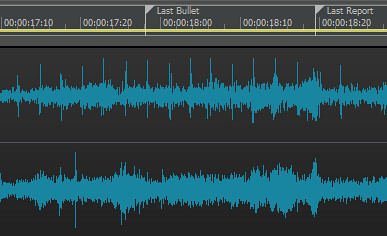
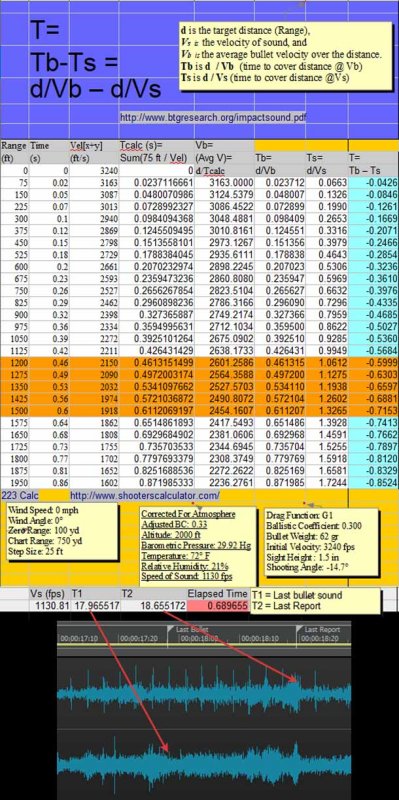
#92. To: VxH (#91)
Now, ask your donkey - what distance does that MEASURED absolute time difference correspond to on the chart?
Bullet Time, Velocity FPS, Tb–Ts
Tb = Time of bullet
Ts = Time of sound, 1.062 seconds @ 1,130 feet per second (FPS) (72ºF, 20% Humidity)
Ts – Tb = Time difference between Tb and Ts
Column 2 = Tb stepped in 100 FPS increments, beginning with Ts
Column 3 = Ts – Tb (time in seconds supersonic bullet arrives ahead of sound) Bullet time (s), Bullet average velocity (FPS), time difference to sound at 1,200 feet (s)
Bullet time (s) Bullet average vel FPS Time diff Ts-Tb 1.062 1130 0.000 0.976 1230 0.086 0.902 1330 0.160 0.839 1430 0.223 0.784 1530 0.278 0.736 1630 0.326 0.694 1730 0.368 0.656 1830 0.406 0.622 1930 0.440 0.591 2030 0.471 0.563 2130 0.499 0.538 2230 0.524 0.515 2330 0.547 0.494 2430 0.568 0.474 2530 0.588 0.456 2630 0.606 0.440 2730 0.622 0.424 2830 0.638 0.410 2930 0.652 0.396 3030 0.666 0.383 3130 0.679 0.372 3230 0.690 0.360 3330 0.702 0.350 3430 0.712 0.340 3530 0.722 0.331 3630 0.731 0.322 3730 0.740 0.313 3830 0.749 0.305 3930 0.757 0.298 4030 0.764
#93. To: nolu chan (#92)
(Edited)
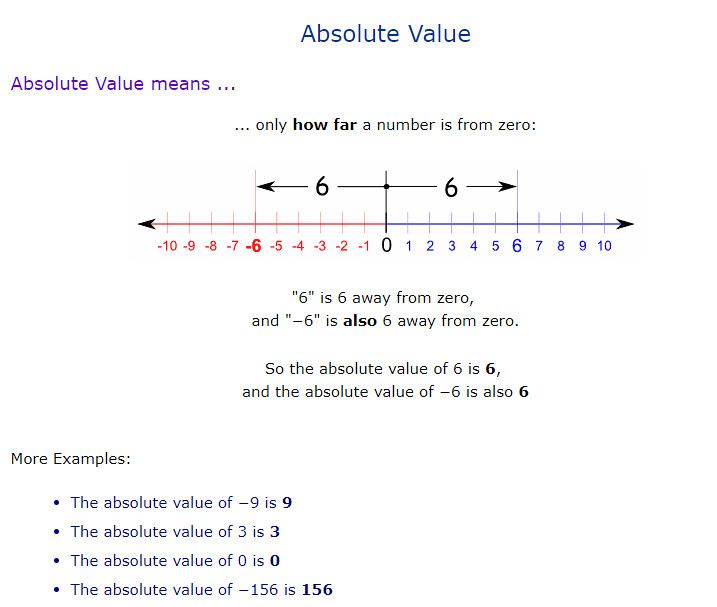
#94. To: nolu chan (#92)
(Edited)


#95. To: VxH (#93)
Since we KNOW from the observed audio Vb is supersonic, we can treat the difference between Tb and Ts as Absolute.
#96. To: nolu chan (#95)
(Edited)
They have a spreadsheet function for that.


#97. To: VxH (#96)

#98. To: nolu chan (#97)
(Edited)
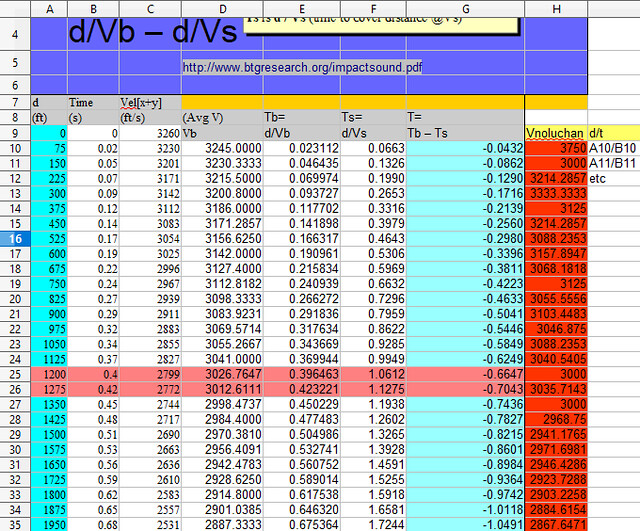
#99. To: nolu chan (#97)
(Edited)
Drag Function: G1
Ballistic Coefficient: 0.300
Bullet Weight: 62 gr
Initial Velocity: 3240 fps
Sight Height : 1.5 in
Shooting Angle: -33°Wind Speed: 0 mph
Wind Angle: 0°
Zero Range: 100 yd
Chart Range: 750 yd
Maximum Range: 50002 yd
Step Size: 25 ydCorrected For Atmosphere
Adjusted BC: 0.33
Altitude: 2000 ft
Barometric Pressure: 29.92 Hg
Temperature: 72° F
Relative Humidity: 21%
Speed of Sound: 1130 fpsRange Time Vel[x+y] (ft) (s) (ft/s) 0 0.00 3240 75 0.02 3163 150 0.05 3088 225 0.07 3014 300 0.10 2941 375 0.12 2870 450 0.15 2799 525 0.18 2730 600 0.20 2662 675 0.23 2595 750 0.26 2529 825 0.29 2465 900 0.32 2401 975 0.36 2337 1050 0.39 2275 1125 0.42 2214 1200 0.46 2154 1275 0.49 2095 1350 0.53 2036 1425 0.56 1979 1500 0.60 1923 1575 0.64 1867 1650 0.68 1813 1725 0.73 1760 1800 0.77 1708 1875 0.81 1658 1950 0.86 1609 2025 0.91 1561 2100 0.96 1515 2175 1.01 1470 2250 1.06 1426 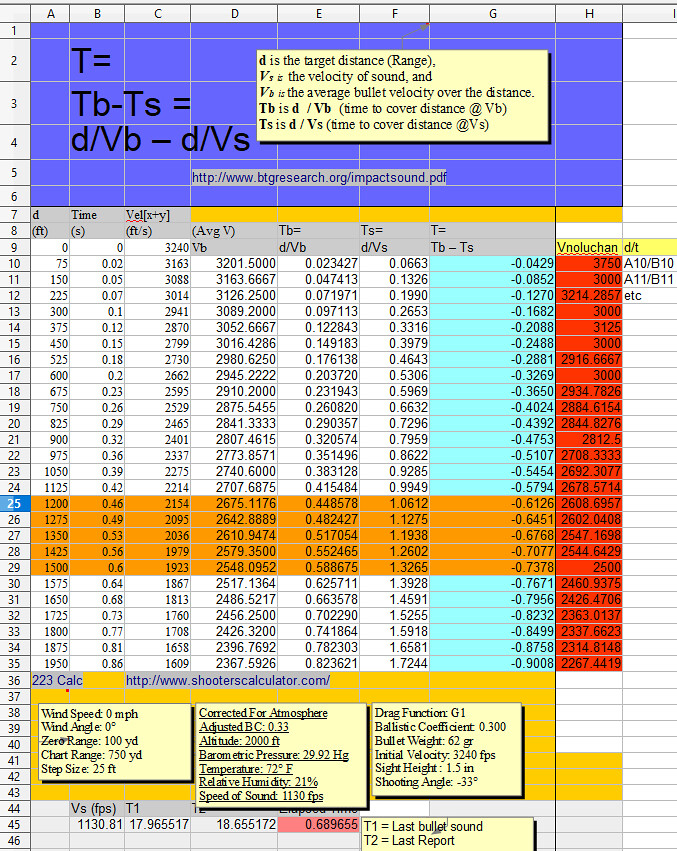

#100. To: VxH (#98)
Vs is the velocity of sound, and
Vb is the average bullet velocity over the distance
Tb is d / Vb (time to cover distance @ Vb)
Ts is d/Vs (time to cover distance @Vs) LOL please tell the class why the bullet accelerates / decelerates / accelerates repeatedly when your "analysis" is applied?
Keep in mind this is an approximation....
#101. To: VxH, A K A Stone (#99)
and the data was directly entered into the cells by hand.
I found/took their formula, built a spreadsheet, and plugged in 223 balistic data generated via shooterscalculator.com:
#102. To: nolu chan (#101)
(Edited)
=SUM(C$9:C11)/L10
=SUM(C$9:C12)/L11
etc.
Where column L contains 1 @ row 8 and =+L8+1, =+L9+1 etc for rows 9..34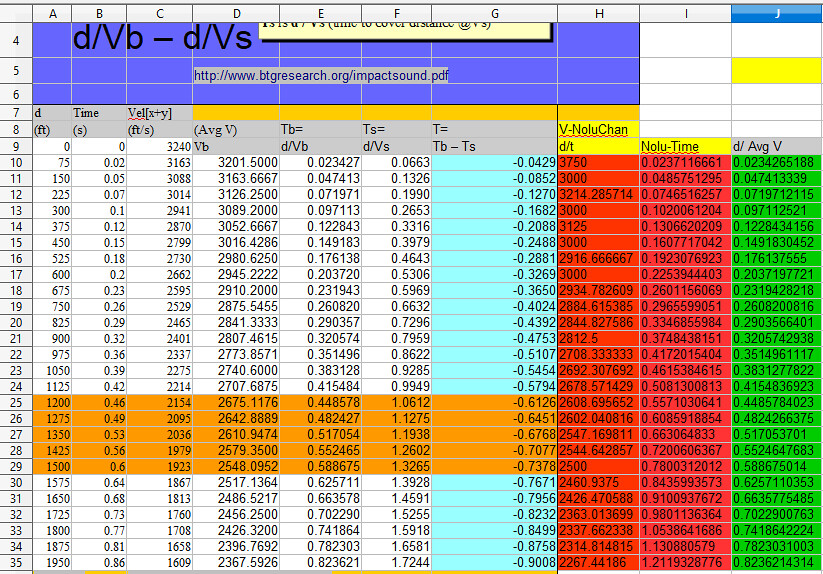
#103. To: VxH (#102)
#104. To: A K A Stone (#103)
#105. To: nolu chan (#101)
(Edited)
You stipulate a DISTANCE ratio of 99:1. Nice try.

#106. To: A K A Stone (#103)
Chan is kicking your ass and you are looking foolish with all your errors.
#107. To: VxH (#106)
#108. To: A K A Stone (#107)
(Edited)
A: { crickets crickets crickets }
#109. To: VxH (#108)
#110. To: VxH (#108)
#111. To: buckeroo (#104)
How do you determine your opinion?
#112. To: A K A Stone (#111)
#113. To: buckeroo (#112)
#114. To: VxH (#106)
(Edited)
Says the genius who posts videos with scribbling on a whiteboard presented as "PROOF".

#115. To: A K A Stone (#109)
#116. To: VxH (#115)
(Edited)
Truth is great and will prevail unless deprived of her natural weapons, free argument and debate.
#117. To: A K A Stone (#116)
(Edited)
If you care about truth why don't you find a list of all the posts yoy made with errors
#118. To: VxH, A K A Stone, noluchan (#117)
Maybe you and Noluchan's donkey can tell us why applying a linear calculation (d/v) to a non-linear velocity produces values for Time which are farther away from the Ballistic chart's value for T than rounding can explain?
#119. To: A K A Stone, noluchan, buckeroo (#117)
(Edited)
{ crickets crickets crickets }
Illustration B: Vb using my original Average of summed Velocity values. B:
B: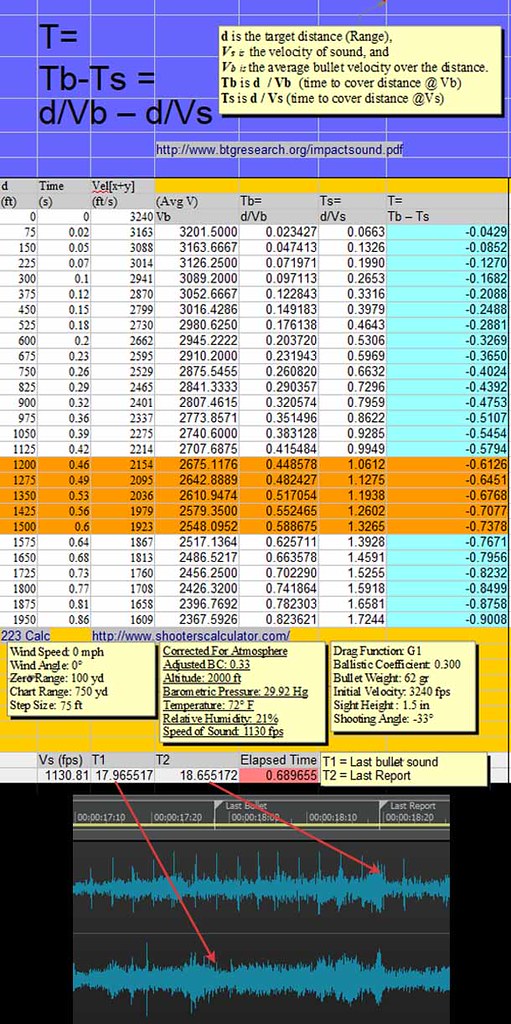
does not seem to produce results that magically render the values produced by summing and averaging Vel[x+y] into "bullshit"?
#120. To: VxH, A K A Stone (#105)
I correctly illustrate the flaw inherent in taking a momentary point velocity of a continuously decelerating proctile and ASSuming it to be an average.
BALLISTICS DATA SPREADSHEET
A1 AVERAGE VELOCITY AND TIME DIFF OVER TOTAL DISTANCE AVERAGE VELOCITY FOR EACH 75 FEET SEGMENT 2 3 B C D E F G H I J K L 4 d Time (avg) Vel[x+y] Ts=d/Vs T=Tb - Ts Tb 75 ft Avg Velocity for Segment Segment Segment 5 (ft) d/Vel[x+y] (ft/s) d/Vs ABS(Tb-Ts) +C7-C6 75 foot segment distance begin end 6 0 0.0000 3240 +75/H4 +B7-B6 +K7+75 A7 7 75 0.0237 3163 0.0664 0.0427 0.0237 3163.0000 75 0 75 8 150 0.0486 3088 0.1327 0.0842 0.0249 3016.4744 75 75 150 9 225 0.0747 3014 0.1991 0.1245 0.0261 2876.1533 75 150 225 10 300 0.1020 2941 0.2655 0.1635 0.0274 2741.7798 75 225 300 11 375 0.1307 2870 0.3319 0.2012 0.0287 2617.2620 75 300 375 12 450 0.1608 2799 0.3982 0.2375 0.0301 2490.8930 75 375 450 13 525 0.1923 2730 0.4646 0.2723 0.0315 2378.2353 75 450 525 14 600 0.2254 2662 0.5310 0.3056 0.0331 2266.7686 75 525 600 15 675 0.2601 2595 0.5973 0.3372 0.0347 2160.0657 75 600 675 16 750 0.2966 2529 0.6637 0.3672 0.0364 2057.9351 75 675 750 17 825 0.3347 2465 0.7301 0.3954 0.0381 1967.1773 75 750 825 18 900 0.3750 2400 0.7965 0.4215 0.0403 1860.3774 75 825 900 19 975 0.4172 2337 0.8628 0.4456 0.0422 1777.1863 75 900 975 20 1050 0.4615 2275 0.9292 0.4677 0.0443 1691.5924 75 975 1050 21 1125 0.5081 2214 0.9956 0.4874 0.0466 1609.7315 75 1050 1125 22 1200 0.5571 2154 1.0619 0.5048 0.0490 1531.4566 75 1125 1200 23 1275 0.6089 2094 1.1283 0.5194 0.0518 1448.4509 75 1200 1275 24 1350 0.6631 2036 1.1947 0.5316 0.0542 1384.2156 75 1275 1350 25 1425 0.7201 1979 1.2611 0.5410 0.0570 1315.8863 75 1350 1425 26 1500 0.7800 1923 1.3274 0.5474 0.0600 1250.6135 75 1425 1500 27 1575 0.8436 1867 1.3938 0.5502 0.0636 1179.8360 75 1500 1575 28 1650 0.9101 1813 1.4602 0.5501 0.0665 1127.9144 75 1575 1650 29 1725 0.9801 1760 1.5265 0.5464 0.0700 1071.1245 75 1650 1725 30 1800 1.0539 1708 1.5929 0.5391 0.0738 1016.9418 75 1725 1800 31 1875 1.1309 1658 1.6593 0.5284 0.0770 973.8184 75 1800 1875 32 1950 1.2119 1609 1.7257 0.5137 0.0811 925.3285 75 1875 1950 33 2025 1.2972 1561 1.7920 0.4948 0.0853 879.1211 75 1950 2025 34 2100 1.3861 1515 1.8584 0.4723 0.0889 843.7085 75 2025 2100 35 2175 1.4796 1470 1.9248 0.4452 0.0935 802.5405 75 2100 2175 36 2250 1.5778 1426 1.9912 0.4133 0.0982 763.3722 75 2175 2250 37 38 Total 39 1.5780 40 SUM G7:G36
#121. To: nolu chan (#120)
(Edited)
?
Illustration B: Vb using my original Average of summed Velocity values. B:
B:
does not seem to produce results that magically render the values produced by summing and averaging Vel[x+y] into " bullshit"?
#122. To: VxH (#121)
(Edited)
.
.
.
[Home] [Headlines] [Latest Articles] [Latest Comments] [Post] [Mail] [Sign-in] [Setup] [Help] [Register]
